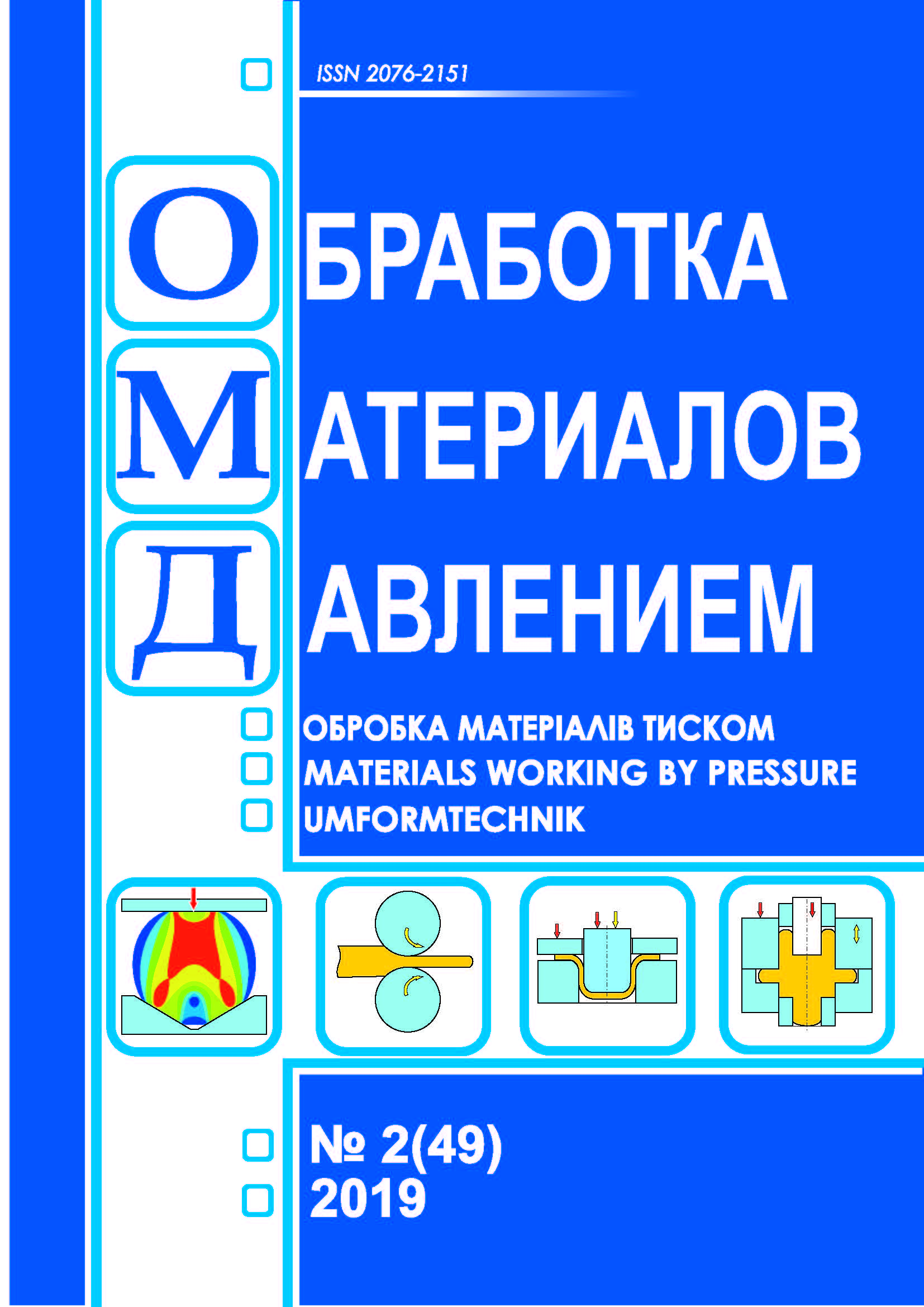Study of the peculiarities of behavior of two-layer cast iron billets in the forging process
DOI:
https://doi.org/10.37142/2076-2151/2019-2(49)76Keywords:
forging; white cast iron; computer simulation; ductile shell; sinking strain; pulling; decarburization; structureAbstract
Myronova Т., Ashkelianets A., Petrusha A., Boiarkin V., Morgun I. Study of the peculiarities of behavior of two-layer cast iron billets in the forging process // Material working by pressure. – 2019. – № 2 (49). - Р. 76-81.
One of the most important problems in the use of white cast irons for wear-resistant parts is to increase their impact resistance and prevent chipping from the working surface, which occurs due to the formation of ledeburite colonies in the form of a grid around austenite dendrites. The use of hot metal forming treatment contributes to the fragmentation of the eutectic component in the structure of white cast irons and significantly improves the complex of their mechanical and operational properties. The low level of ductility in the cast state is an obstacle to the widespread use of deformation of these alloys. To solve this problem, it is important to create new alloy compositions with a high level of plasticity, as well as to develop new methods for deforming billets, for example, in a ductile shell.
The purpose of this work is to study the effect of the presence of a more ductile surface layer in the form of a shell on the behavior of a white cast iron billet during deformation by forging.
The computer modeling in the QForm software product was used, with which determined that using the cast iron billet method there is a more uniform distribution of deformation over the forging cross section than when forged by pulling, and when using the pulling, the deformation scheme “from circle to square” is preferred”. The white cast iron containing 2.8 ... 3,2 % C; 2.7 % V; 0.65 % Si, was used for experimental studies. This alloy is a dactylic, ledeburite, economically alloyed cast iron with high ductility. The presence of a more ductile shell, obtained by decarburization of the surface zone, ensures successful deformation of a two-layer metal billet.
References
Scherbedinsky G.V. Cast iron as a promising material of the XXL century. Metal Science and Heat Treatment. 2005, 7, pp. 83–93. (in Russian).
Bunin K.P., Malinochka Y.N., Taran Yu.N. Foundations of cast iron metallography. Moscow. Metallurgy. 1969, 415 p. (in Russian).
Taran–Zhovnir Yu.N. The structure of eutectics and the creation of new alloys of the eutectic type. Scientific Material Science of the 21st Century. Kyiv. 1998, pp. 176–197. (in Russian).
Silman G.I. White alloy cast iron with a composite structure. Metal Science and Heat Treatment. 2005, 7, pp. 94–100. (in Russian).
Mironova, T.M., Kutsova V.Z. Structure and properties of deformable cast irons. Dnepropetrovsk: Driant. 2009, 190 p. (in Russian).
Mironova T.M., Ryabchiy M.M. Structure formation control in white ledeburite cast irons at various stages of deformational redistribution. Metallurgical and mining industry. 2008, 4, pp. 79–81. (in Russian).
Mironova T.M., Ashkelianets A.V., Chukhlib V.L, Petrusha A.A. Investigation of the influence of dimensional parameters of pig–iron billets and deformation modes on the formation of structure in the forging process. Bulletin of the NTU "KhPI". 2018, 31(1307), pp. 30-35. (in Ukrainian).
Qform-3D. Available at: http://www.qform3d.ru/products/qform.
Mironova T.M., Donskaya T.R., Sidorova A.Yu. On the mechanisms of the influence of phase transitions on the behavior of eutectic carbides during deformation. Bullletin of DSU. Ser.: Physics, Radio Electronics. Dnepropetrovsk. 2012, 20, 2, pp. 97–104. (in Russian).

